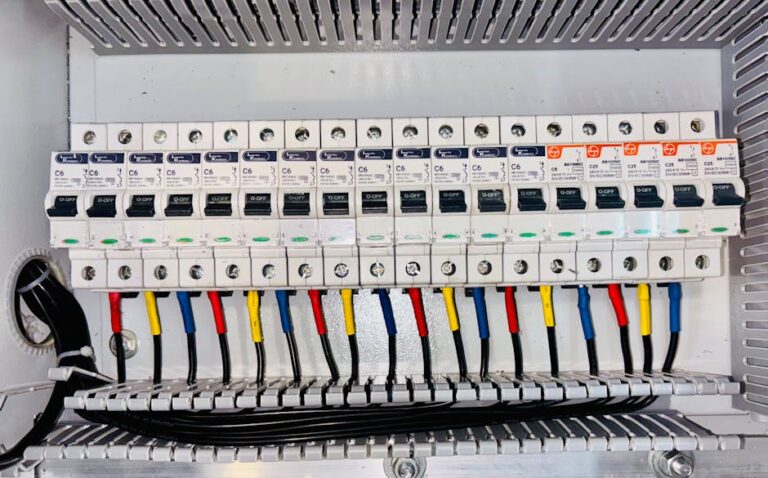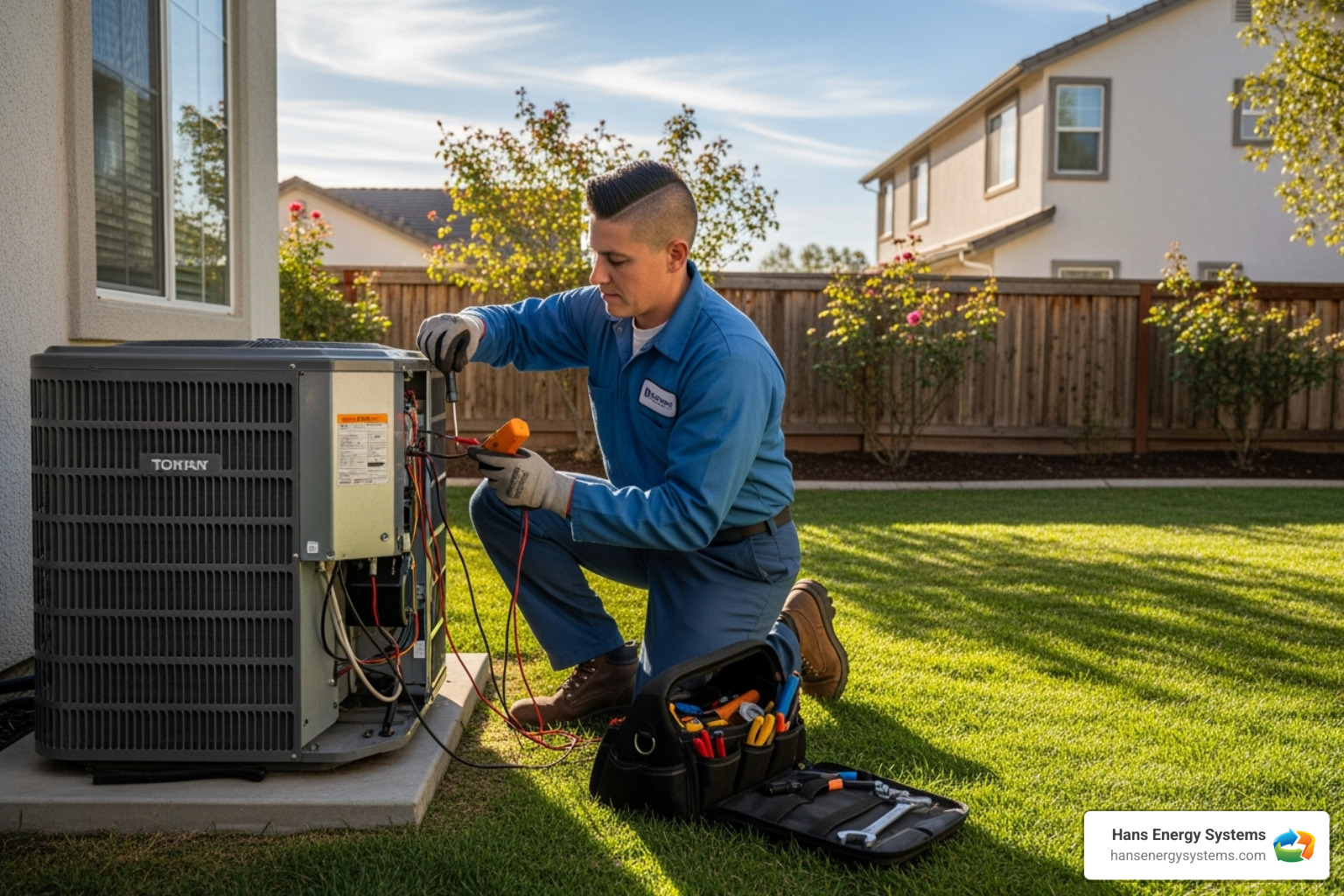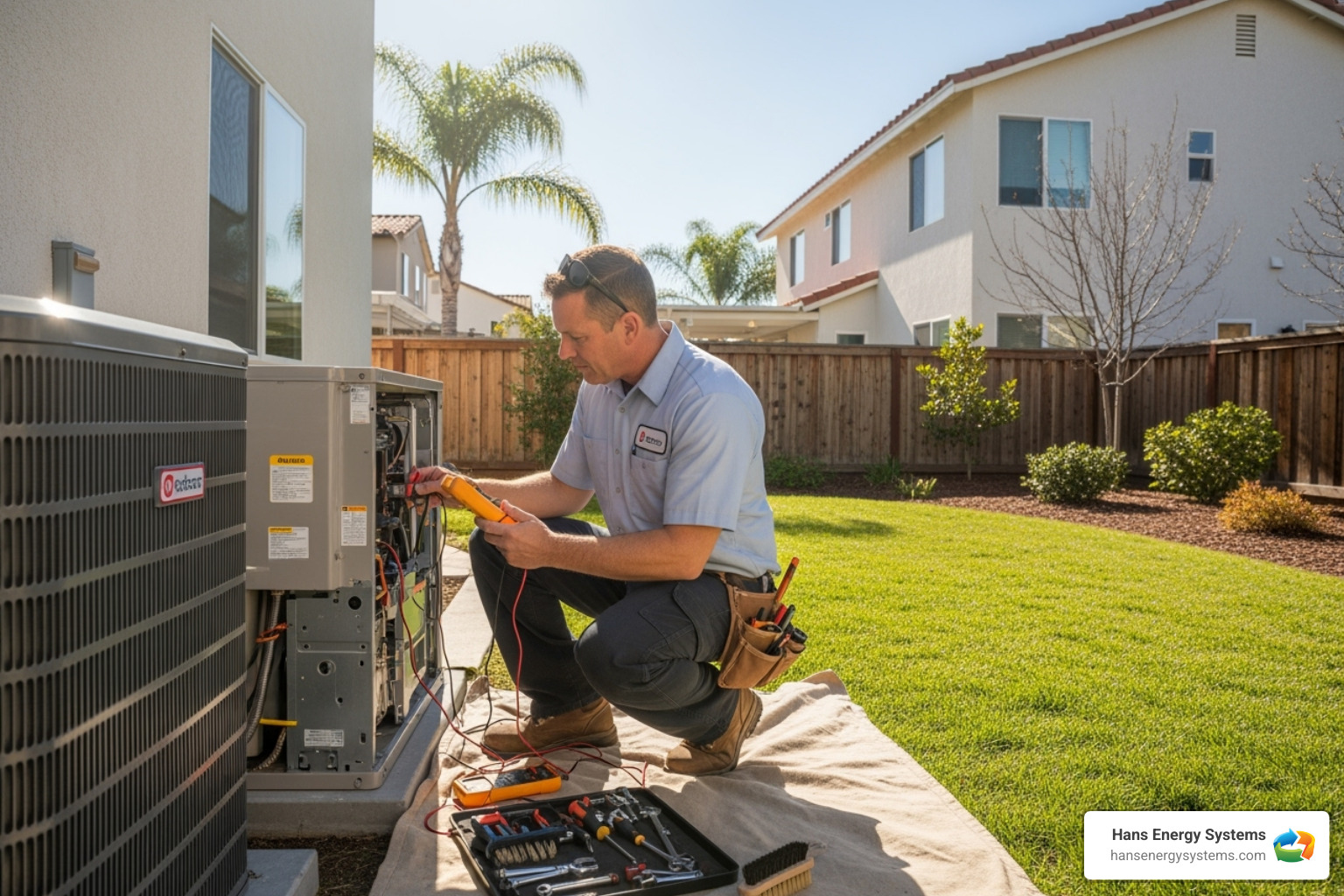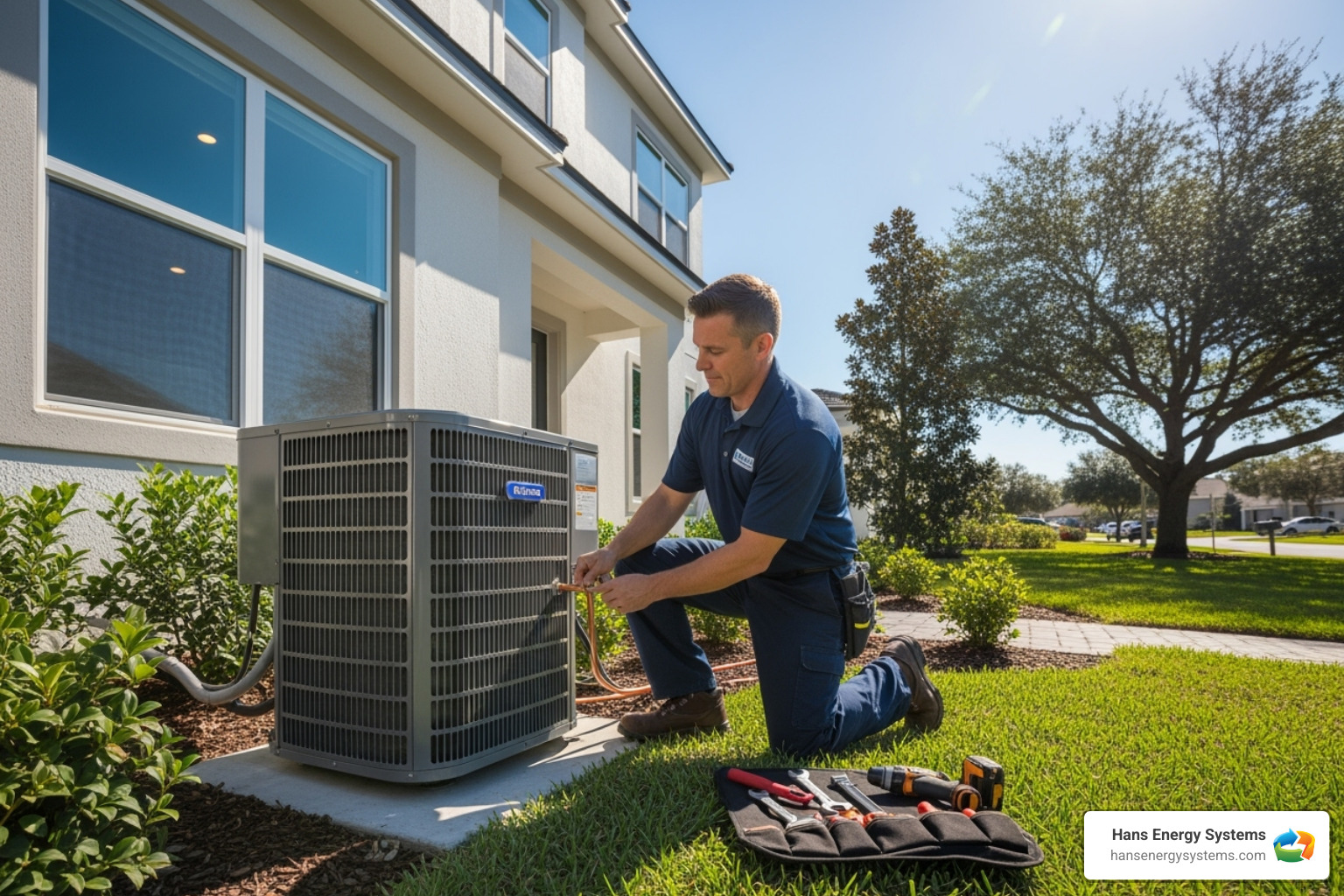When Your Circuit Breaker Tripped: Quick Solutions and Safety First
Circuit breaker tripped issues affect millions of homeowners every year, and they’re especially frustrating during Southern California’s hot summers when your AC suddenly stops working. The good news? Most tripped breakers can be safely reset in just a few minutes.
Quick Fix for a Tripped Circuit Breaker:
- Turn off all appliances on the affected circuit
- Locate the tripped breaker (switch in middle position or OFF)
- Push firmly to OFF position, then back to ON
- Test the circuit by turning on one device at a time
A tripped circuit breaker is actually your home’s safety system working correctly. According to electrical safety data, electrical fires cause an estimated 51,000 fires each year, resulting in 490 deaths and $1.3 billion in property damage. Your breaker trips to prevent these dangers.
The most common reason your breaker trips is simple: you’re asking one circuit to handle too much power. Think about running your microwave, dishwasher, and air conditioner all at once – that’s often more than a single 20-amp circuit can safely handle.
But sometimes a tripped breaker signals something more serious. If your breaker keeps tripping even after you’ve reduced the load, or if you smell burning, you’re dealing with a potential safety hazard that needs professional attention.
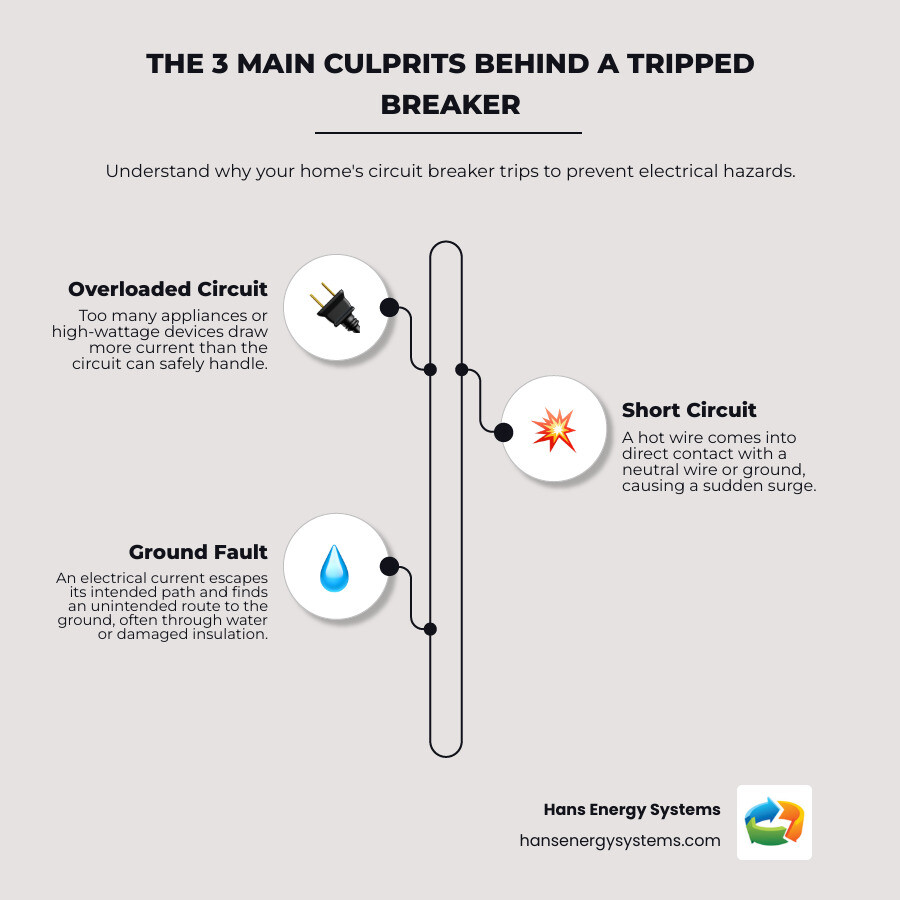
What is a Circuit Breaker and Why is it Important?
Think of your circuit breaker as the unsung hero of your home. Every time you flip a light switch or plug in your phone charger, this little device is quietly standing guard, ready to protect your family from electrical dangers.
A circuit breaker is essentially a smart switch that automatically cuts off electrical power when something goes wrong. Unlike the old-fashioned fuses that burned out and needed replacing, modern circuit breakers can be reset and used over and over again.
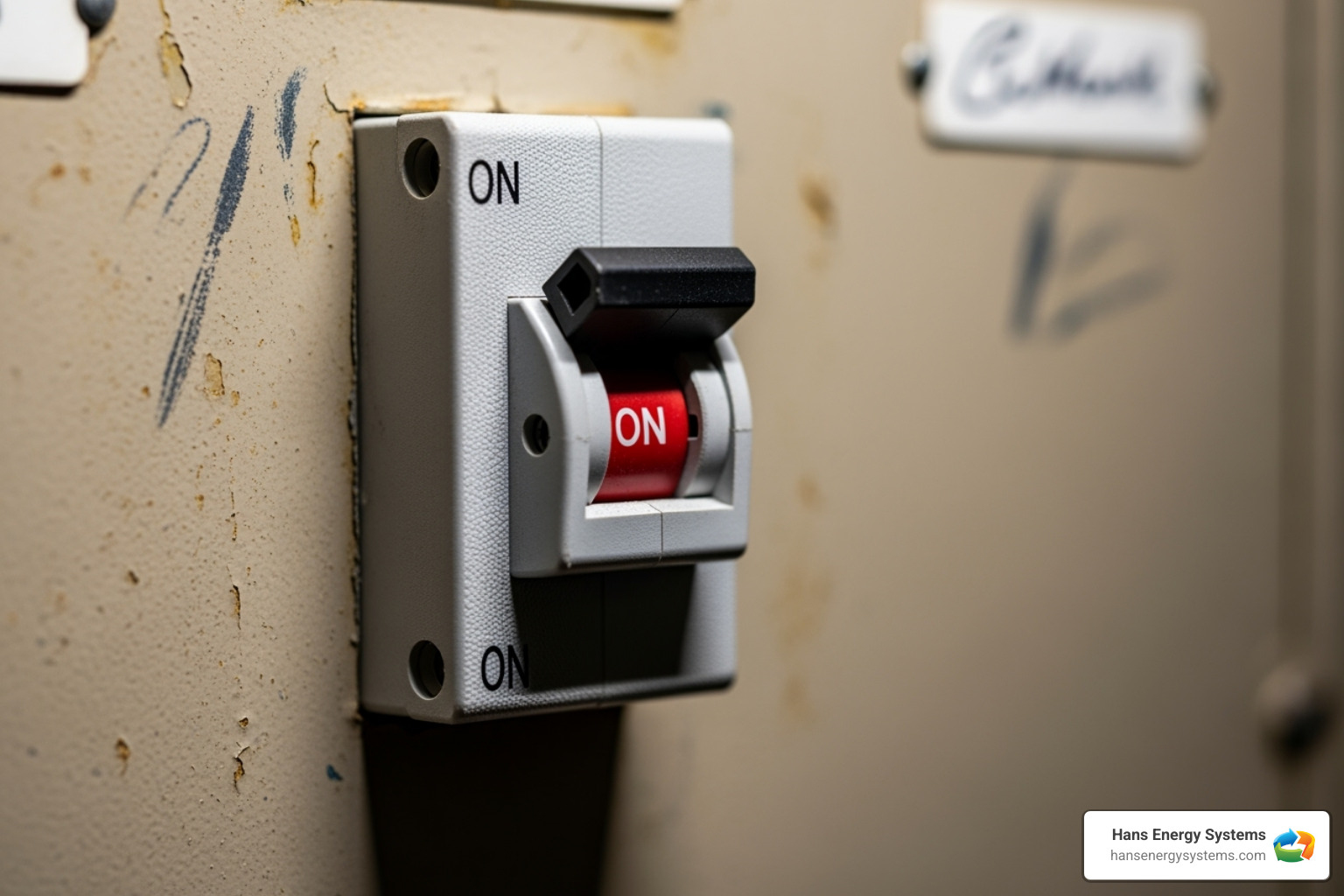
Here’s why this matters: electrical fires cause over 50,000 house fires every year in the United States. Your circuit breaker prevents most of these by stopping dangerous electrical flow before wires can overheat and catch fire.
When your circuit breaker tripped, it’s actually doing its job perfectly. It detected a problem – maybe too much power flowing through one circuit, or a dangerous fault – and immediately shut things down to keep you safe.
The system works by monitoring electrical current flow. When everything’s normal, electricity flows smoothly from your electrical panel to power your lights, appliances, and outlets. But if the breaker senses trouble, it trips faster than you can blink. To learn more about the basics of electrical flow, check out how electricity works.
The Purpose of Your Home’s Electrical Panel
Your electrical panel – sometimes called a breaker box – is like mission control for your home’s power system. It takes the electricity coming from the utility company and divides it safely among all the different circuits in your house.
The main breaker at the top controls power to your entire home. Think of it as the master switch. Below that, you’ll find rows of individual circuit breakers, each one protecting a specific area or group of outlets.
Each circuit has a job to do. One might handle your kitchen outlets, another powers the upstairs bedrooms, and yet another runs your air conditioning system. When any of these circuits gets overloaded or develops a problem, its individual breaker trips to protect that specific area without affecting the rest of your home.
This setup means that when your circuit breaker tripped in the kitchen, you don’t lose power to your entire house – just that one circuit.
Different Types of Circuit Breakers
Not all circuit breakers are created equal. Different types offer different kinds of protection, and newer homes often have more advanced options.
Standard breakers are the workhorses you’ll find in most panels. These handle overcurrent protection by tripping when too much electricity flows through a circuit. They’re designed to catch two main problems: circuits overloaded with too many appliances, and short circuits where wires touch each other incorrectly.
Arc-Fault Circuit Interrupters (AFCIs) are the newer, smarter cousins of standard breakers. These detect dangerous electrical arcing – those sparks that can happen when wires get damaged or connections become loose. Since arcing can cause fires even when the current isn’t technically overloaded, AFCI breakers provide an extra layer of arcing prevention that’s especially important in bedrooms and living areas.
Ground-Fault Circuit Interrupters (GFCIs) focus on shock prevention. These specialized breakers protect you from electrocution by detecting when electricity takes an unexpected path – like through your body if you touch a faulty appliance. You’ll typically find GFCI protection in bathrooms, kitchens, and outdoor areas where water and electricity might meet. Learn more about their life-saving function at Ground-Fault Circuit Interrupters.
Each type of breaker serves as a different kind of safety net, working together to keep your home’s electrical system as safe as possible.
Why Has My Circuit Breaker Tripped? The 3 Main Culprits
You’re in the middle of making dinner when suddenly the kitchen goes dark. Or maybe you’re blow-drying your hair and everything shuts off. When your circuit breaker tripped, it’s not trying to ruin your day—it’s actually protecting your home from potentially dangerous electrical problems.
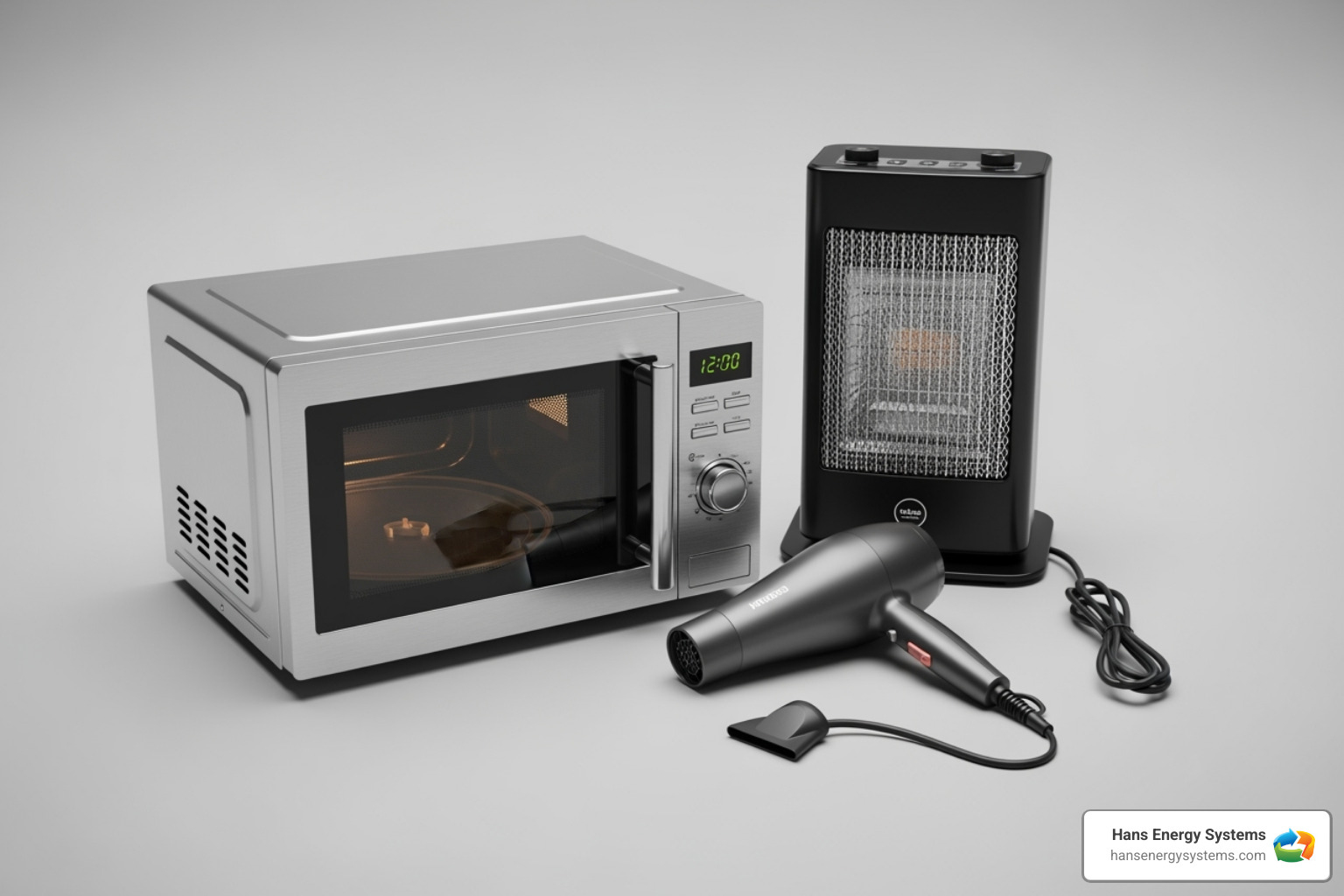
Think of your circuit breaker as a helpful friend who knows when you’re taking on too much. Just like that friend might step in when you’re carrying too many grocery bags, your breaker steps in when your electrical circuit is handling more than it can safely manage.
There are three main reasons why this happens, and understanding them can help you figure out what went wrong and how to prevent it from happening again.
Overloaded Circuit
This is hands down the most common cause of a tripped breaker. An overloaded circuit happens when you’re asking one circuit to power more appliances than it can handle. It’s like trying to pour a gallon of water through a straw—eventually, something’s got to give.
Picture this scenario: you’re running the microwave to heat up leftovers, the dishwasher is cleaning last night’s dishes, and your air conditioner is working hard to keep your Poway home cool during a hot afternoon. Then you decide to plug in that high-powered blender to make a smoothie. Circuit breaker tripped!
High-wattage devices are usually the troublemakers here. Space heaters, hair dryers, toasters, air conditioners, and most kitchen appliances draw a lot of power. When too many of these energy-hungry devices run on the same circuit, the wires start to heat up. Your breaker senses this dangerous situation and shuts everything down before the wires can overheat and cause a fire.
If your air conditioner is frequently causing breaker trips, it might be dealing with other issues too. You can learn more about this in our guide on Common AC Problems in Poway and Solutions.
Short Circuit
A short circuit is more serious than an overload and usually causes your breaker to trip immediately. You might hear a popping sound or even smell something burning—that’s your cue that this isn’t just a simple overload.
This happens when a hot wire touches a neutral wire where they shouldn’t meet. Think of it like two rivers suddenly merging—there’s a massive rush of water (or in this case, electricity) that overwhelms everything downstream.
Damaged wiring is often the culprit. Maybe the insulation on an appliance cord has worn away, or perhaps a curious pet decided to chew on some wires (it happens more than you’d think!). Sometimes faulty appliance cords are to blame, especially if they’ve been bent, kinked, or damaged over time.
The burning smell and popping sound are warning signs you shouldn’t ignore. A short circuit poses a real fire risk, so if you suspect this is what caused your breaker to trip, it’s time to investigate carefully or call in a professional.
Ground Fault
A ground fault occurs when a hot wire touches ground—either a ground wire or any grounded surface like a metal appliance case or water pipe. This creates an unintended path for electricity to flow, and it’s particularly dangerous because it can lead to serious electrical shocks.
Moisture is often involved in ground faults, which is why they’re more common in kitchens, bathrooms, and outdoor areas. Using electrical appliances near water sources increases the risk significantly. Damaged equipment with exposed wiring can also cause ground faults, especially power tools or appliances with worn-out casings.
This is exactly why GFCI outlets exist—they can detect even tiny amounts of current leaking to ground and shut off power almost instantly. If you experience frequent ground faults, especially in wet locations like your kitchen or bathroom, it’s a clear sign that something needs professional attention.
Ground faults create a serious electrocution hazard, so they’re not something to take lightly. Your breaker tripping in these situations is literally protecting you from potentially life-threatening electrical shock.
How to Safely Reset a Tripped Circuit Breaker
You’ve figured out why your circuit breaker tripped, and now it’s time to get your power back on. The good news? Resetting a breaker is straightforward. The even better news? With the right approach, you can do it safely.
Before you touch anything electrical, grab two essential items: a flashlight and safety goggles. Yes, safety goggles might seem like overkill for flipping a switch, but when you’re dealing with electricity, it’s always better to be overly cautious than underly protected.
Step 1: Identify the Tripped Breaker
Head to your electrical panel – that metal box usually tucked away in your garage, utility closet, or basement. Once you open the door, you’ll see rows of switches that look like tiny light switches.
Here’s what you’re looking for: a breaker that’s not quite in the “ON” position. Tripped breakers typically sit in the middle between ON and OFF, almost like they can’t make up their mind. Some breakers flip all the way to OFF when they trip. You might also notice a small red or orange window that appears on certain brands when they’ve tripped – it’s like a little warning flag.
If your panel has clear labels (lucky you!), finding the right breaker is easy. If not, you might need to do some detective work. Quality breakers like Eaton breakers often have clear trip indicators that make this step simpler.
Step 2: Unplug Appliances on the Circuit
Before you reset anything, you need to reduce the load on that circuit. Think of it like clearing traffic before reopening a road. Head to the affected area and turn off all light switches, then unplug every appliance and device connected to that circuit.
This step serves two purposes. First, if an overload caused your circuit breaker tripped situation, removing the demand gives the breaker a fighting chance to stay on. Second, you’re setting yourself up to identify any faulty appliances by testing them one at a time later.
Step 3: Reset the Breaker
Now for the main event. Stand slightly to the side of the panel – not directly in front of it. While modern breakers are very safe, this position protects you from any unexpected sparks.
First, push the breaker firmly to the OFF position. You should feel a definitive click. This ensures the breaker is completely disengaged. Next, push it firmly back to ON. Don’t be gentle – breakers need a confident, firm push to engage properly.
Put on those safety goggles before you flip the switch. It takes two seconds and could save you from injury.
Once you’ve reset the breaker, test the circuit gradually. Go back to the affected area and turn on one device at a time. Wait a minute or two between each one. If the breaker stays on, congratulations – you’ve solved the problem! If it trips again immediately, even with nothing plugged in, you’re likely dealing with a short circuit or ground fault that needs professional attention.
Prevention and When to Call an Electrician
Successfully resetting a circuit breaker tripped by an overload feels like a small victory, doesn’t it? You’ve conquered the darkness and restored power to your home! But here’s the thing – wouldn’t it be even better if you could prevent those frustrating interruptions from happening in the first place?

The good news is that most circuit breaker trips are completely preventable with a little awareness and planning. And when they’re not? Well, that’s when you need to recognize the warning signs that something more serious is going on.
How to Prevent Future Tripping
Think of preventing circuit breaker trips like managing your household budget – it’s all about not spending more than you have. In this case, you don’t want to use more electricity than your circuits can safely handle.
Distribute your electrical loads evenly throughout your home. If you’re making breakfast, try not to run your toaster, coffee maker, and microwave all at the same time if they’re on the same circuit. It’s like asking one person to carry all the groceries when you have several people available to help.
Avoid using multiple high-power devices simultaneously. We get it – mornings are hectic, and you want to get ready quickly. But running your hair dryer while the space heater is warming up the bathroom is a recipe for a tripped breaker. These power-hungry devices work much better when they don’t have to compete for electricity.
Unplug electronics when you’re not using them. While that phone charger or coffee maker might not seem like much, all those little “phantom loads” can add up. Plus, you’ll save some money on your electric bill too!
Consider upgrading to ENERGY STAR appliances when it’s time to replace older ones. Modern appliances are incredibly efficient compared to their older cousins. That ancient refrigerator might be charming, but it’s probably drawing way more power than necessary.
For major appliances like your HVAC system, dedicated circuits make all the difference. Your air conditioner shouldn’t have to share power with your kitchen outlets. If your home doesn’t have dedicated circuits for heavy-duty equipment, it’s worth discussing this upgrade with a qualified electrician.
When a Tripped Circuit Breaker Signals a Deeper Problem
Sometimes a circuit breaker tripped isn’t just about too many appliances – it’s your home’s way of waving a red flag. Recognizing these warning signs can literally save your home and your family’s safety.
Frequent tripping is the biggest red flag. If the same breaker keeps shutting off, even after you’ve unplugged everything and reduced the load, something else is going on. This could mean damaged wiring, a failing breaker, or an electrical fault that needs professional attention.
A breaker that’s hot to the touch is never normal. Circuit breakers should feel cool or slightly warm at most. If you carefully touch one and it feels hot, that’s a sign of dangerous overheating inside your electrical panel.
Any burning smell from your panel demands immediate attention. This isn’t something to investigate yourself – turn off the main breaker if you can do so safely, and call an electrician right away. Electrical fires can spread incredibly quickly.
Scorch marks or discoloration around breakers or outlets tell a story of overheating that’s already happened. Even if everything seems to be working fine now, this visible damage indicates a serious problem that could worsen.
If your electrical panel is over 25 years old, it might be time for an upgrade regardless of other symptoms. Like any mechanical system, electrical panels wear out. Older panels also weren’t designed to handle the electrical demands of modern homes with all our devices and appliances.
Sometimes electrical issues show up in unexpected ways. If your HVAC system is acting up – maybe making strange sounds or cycling on and off unexpectedly – it could be related to electrical problems. You can learn more about specific AC issues here: Why Your AC Unit Makes Buzzing Sounds.
The bottom line? Trust your instincts. If something doesn’t seem right with your electrical system, it’s always better to have a professional take a look than to ignore the warning signs.
Frequently Asked Questions about Tripped Circuit Breakers
What are the dangers of ignoring a repeatedly tripping circuit breaker?
Let’s be honest – when your circuit breaker tripped for the third time this week, it’s tempting to just keep flipping it back on and hope the problem goes away. But ignoring a repeatedly tripping breaker is like ignoring that weird noise your car makes – it rarely ends well.
The most serious danger is fire risk. When a breaker keeps tripping, it’s usually your home’s way of saying “something’s wrong here!” That something could be overloaded wires heating up inside your walls, damaged insulation creating dangerous arcs, or faulty connections sparking where they shouldn’t. According to electrical safety data, electrical distribution and protection equipment caused 10% of reported industrial fires in 2020.
Beyond fire hazards, you’re also risking damage to your appliances and electronics. Those constant power fluctuations and sudden shutoffs stress your devices, shortening their lifespan and potentially causing expensive failures. Your refrigerator, TV, and computer weren’t designed for electrical roller coasters.
There’s also the underlying wiring issue to consider. A frequently tripping breaker often signals damaged, old, or faulty wiring hidden in your walls. This isn’t just inconvenient – it’s a serious safety hazard that can put your family at risk of electrical shock or electrocution, especially if ground faults are involved.
The bottom line? Your electrical system is trying to protect you. When it keeps crying for help, it’s time to listen and call a professional.
Can my HVAC system cause a circuit breaker to trip?
Absolutely! Your HVAC system is like the heavyweight champion of power consumption in your home, and it can definitely cause a circuit breaker tripped situation. Here in San Diego County, where our AC units work overtime during those hot summer months, we see this more often than you might think.
The biggest culprit is the high power draw during startup. When your air conditioner’s compressor kicks on, it needs a massive surge of electricity – kind of like how you need that extra push to get up from the couch after a long day. If your circuit is already working hard, that startup surge can be the final straw that trips the breaker.
Failing components are another common cause. A worn-out compressor, a struggling condenser fan motor, or a failing capacitor can all draw excessive current. These components don’t always announce their problems loudly – sometimes a tripped breaker is the first sign something’s going wrong.
Here’s something many homeowners don’t realize: dirty air filters can actually cause electrical problems. When your filter is clogged, your system has to work much harder to move air, which means more power consumption and potential overheating. It’s like trying to breathe through a straw – everything has to work overtime.
Faulty wiring within your HVAC unit or its electrical connections can create short circuits or ground faults too. If your heating system is frequently tripping its breaker, it might be showing you these warning signs: Signs You Need Heating Repair in Poway.
How do I know if the problem is the appliance or the circuit?
This is the million-dollar question, isn’t it? Fortunately, there’s a simple detective method that works every time, and you don’t need any special tools.
Start by unplugging everything on the affected circuit when the circuit breaker tripped. Yes, everything – that means all appliances, electronics, and turning off light switches too. Think of it as giving your circuit a clean slate.
Next, reset the breaker by firmly pushing it to OFF, then back to ON. Now comes the systematic part: head back to the affected area and plug in just one device. Turn it on and wait a few minutes.
Here’s where it gets interesting. If that single device immediately trips the breaker, you’ve found your culprit. That appliance has an internal problem – maybe damaged wiring, a failing motor, or a short circuit. To double-check, try plugging it into a different circuit. If it trips that one too, you know the appliance is the problem.
If the first device works fine, unplug it and try the next one. Keep going device by device until you either find the problematic appliance or get through everything without a trip.
Here’s the plot twist: if you can plug everything back in without tripping the breaker, then you simply had too many things running at once. Your circuit was overloaded, not broken. Now you know to spread out your power usage or avoid running multiple high-wattage devices simultaneously.
This method takes a few minutes but saves you from guessing games and unnecessary service calls. Plus, you’ll know exactly what caused the problem and how to prevent it next time.
Your Next Steps for a Safe and Reliable Electrical System
When you’ve experienced a circuit breaker tripped, you’re now equipped with the knowledge to handle it safely and confidently. We’ve covered the three main culprits – overloaded circuits from running too many appliances at once, dangerous short circuits that need immediate attention, and ground faults that pose serious safety risks, especially around water.
The good news is that most tripped breakers are simply telling you to slow down a bit. Maybe don’t run the microwave, dishwasher, and hair dryer all at the same time. Your electrical system will thank you for it.
But here’s what’s really important: knowing when to stop and call for help. If you’re dealing with frequent tripping, burning smells, hot breakers, or scorch marks around your electrical panel, these aren’t DIY moments. These are serious safety concerns that need professional expertise.
Your home’s electrical system works hand-in-hand with your heating and cooling systems. When your HVAC unit starts drawing excessive power or causing breakers to trip, it’s often signaling that something deeper is wrong. Maybe it’s a failing capacitor, dirty filters forcing your system to work overtime, or aging components that are struggling to keep up.
While resetting a simple overload is perfectly safe for homeowners, persistent electrical issues require expert diagnosis. This is especially true when your comfort systems are involved. A tripped breaker might be the first sign that your furnace or air conditioner needs attention before a complete breakdown leaves you uncomfortable during San Diego County’s temperature extremes.
At Hans Energy Systems, we understand that your home’s electrical and HVAC systems work together to keep your family safe and comfortable. Our professional technicians can diagnose whether that circuit breaker tripped is a simple overload or a symptom of a larger issue with your heating and cooling equipment.
Don’t let electrical problems compromise your home’s safety or comfort. For expert help with your heating system, schedule your heating repair today.


